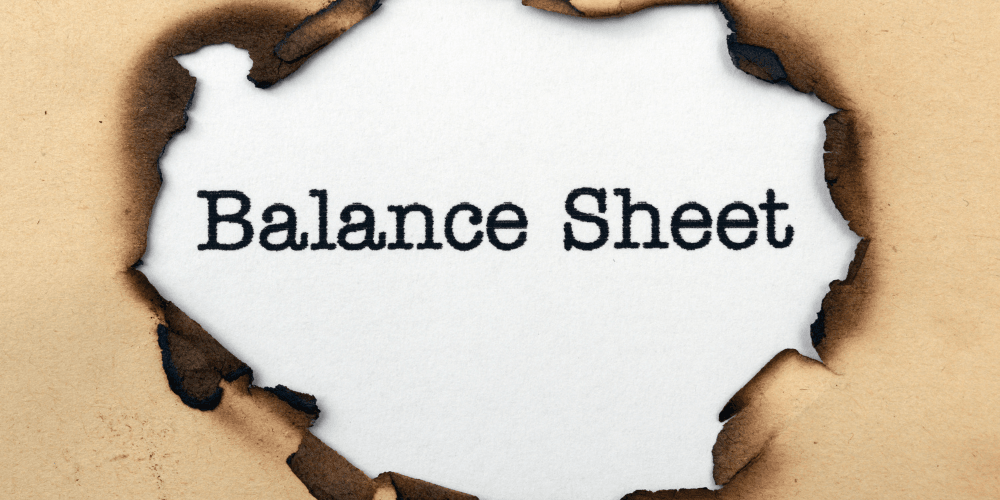In the world of finance, the balance sheet often takes centre stage. It\’s a critical financial statement that provides a glance at a company\’s financial position at a specific point in time. If you\’re an investor, business owner, or simply someone curious about the inner workings of companies, understanding the balance sheet is essential. In this blog post, we\’ll delve into the world of balance sheets, exploring their purpose, importance, components, uses, and more.
What is a Balance Sheet?
A financial statement that summarizes a company\’s shareholders\’ Equity, assets, and liabilities is known as a balance sheet. It adheres to a fundamental equation:
Assets = Liabilities + Shareholders\’ Equity
- Assets: What the company owns (e.g., cash, inventory, property, equipment).
- Liabilities: Liabilities are what the company owes to others (e.g., loans, accounts payable, bonds).
- Shareholders\’ Equity: The residual interest in the entity\’s assets after deducting liabilities is known as shareholders\’ Equity. (e.g., common stock, retained earnings).
This equation always holds true, ensuring that the balance sheet remains balanced.
Why is a Balance Sheet Crucial?
The balance sheet is pivotal for several reasons:
- Financial Health Assessment: The balance sheet provides insights into a company\’s financial strength and liquidity. By examining the balance sheet, at a glance, you can assess whether a company has sufficient assets to meet its short-term obligations and cover its debts.
- Decision-Making: Investors and creditors rely on the balance sheet to make informed decisions. It helps assess a company\’s risk profile, profitability, and growth potential.
- Performance Tracking: By comparing balance sheets over time, you can track a company\’s financial progress. It can reveal trends, such as increasing debt or declining assets, which may warrant further investigation.
- Communication: The balance sheet standardizes how companies communicate their financial status to external parties, such as investors and regulators.
Benefits of a Balance Sheet
- Transparency: Provides a clear picture of a company\’s financial resources and obligations.
- Benchmarking: Allows for comparisons between companies within the same industry.
- Risk Assessment: Aids in identifying potential financial risks, such as excessive debt.
- Capital Allocation: Helps companies make informed decisions about how to allocate their financial resources.
Pros and Cons of a Balance Sheet
Pros
The balance sheet provides an image of the financial position.
The balance sheet helps assess financial health.
Useful for decision-making.
It is standardized and transparent.
Cons
The balance sheet only reflects a precise point in time.
The balance sheet doesn\’t account for intangible assets.
It may not fully capture future prospects.
The balance sheet can be manipulated through accounting.
Uses of a Balance Sheet
- Investors: To evaluate investment opportunities and risk.
- Creditors: To determine creditworthiness and lending terms.
- Management: To assess operational efficiency and make strategic decisions.
- Regulators: To monitor financial stability and compliance.
How to Use a Balance Sheet
- Analyze the Components: Carefully examine each section – assets, liabilities, and shareholders\’ Equity.
- Calculate Ratios: To gain deeper insights, use financial ratios such as the return on Equity, debt-to-equity ratio, and the current ratio.
- Compare Over Time: Look at historical balance sheets to identify trends and changes.
- Benchmark Against Industry Peers: Compare the company\’s balance sheet to those of similar businesses.
- Seek Professional Advice: Consult with a financial expert if you need help interpreting the data.
How to Make a Balance Sheet (Simplified)
- Gather Information: Collect data on all assets, liabilities, and equity accounts.
- Categorize: Group assets into current and non-current, and do the same for liabilities.
- Calculate Totals: Add up the individual accounts in each category.
- Apply the Equation: Ensure that assets equal liabilities plus shareholders\’ Equity.
- Format: Present the information in a clear and organized manner.
Conclusion
The balance sheet is an irreplaceable and integral tool for anyone who understands a company\’s financial landscape. While it offers a wealth of information, it\’s important to remember that it is just one piece of the financial puzzle. To gain an entire picture of a company\’s financial health, you should analyze the balance sheet in conjunction with other financial statements, such as the cash flow statement and income statement.
Disclaimer
The information provided in the above blog post is for general knowledge only and should not be considered financial advice. Before making any investment decisions, consult with a qualified financial professional.


